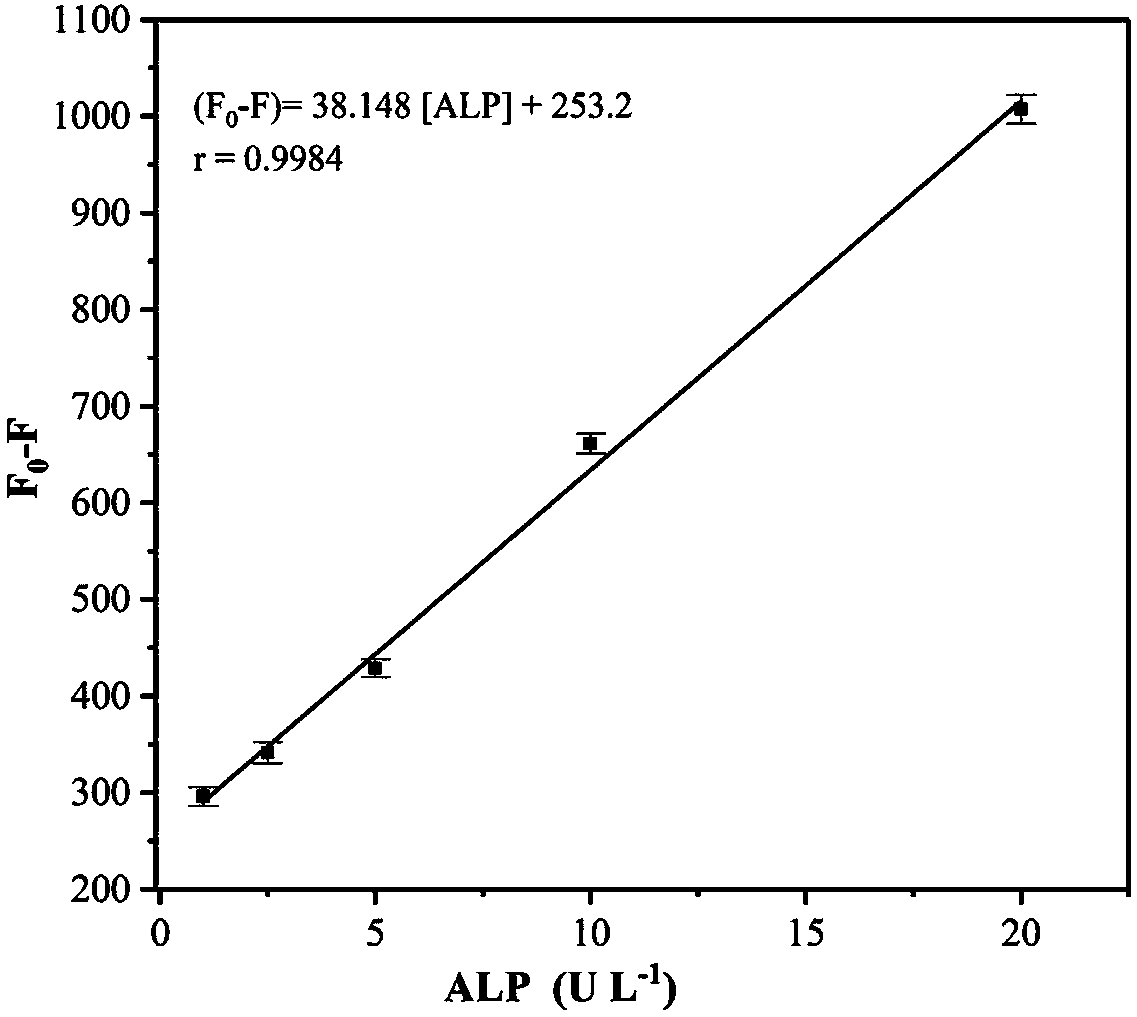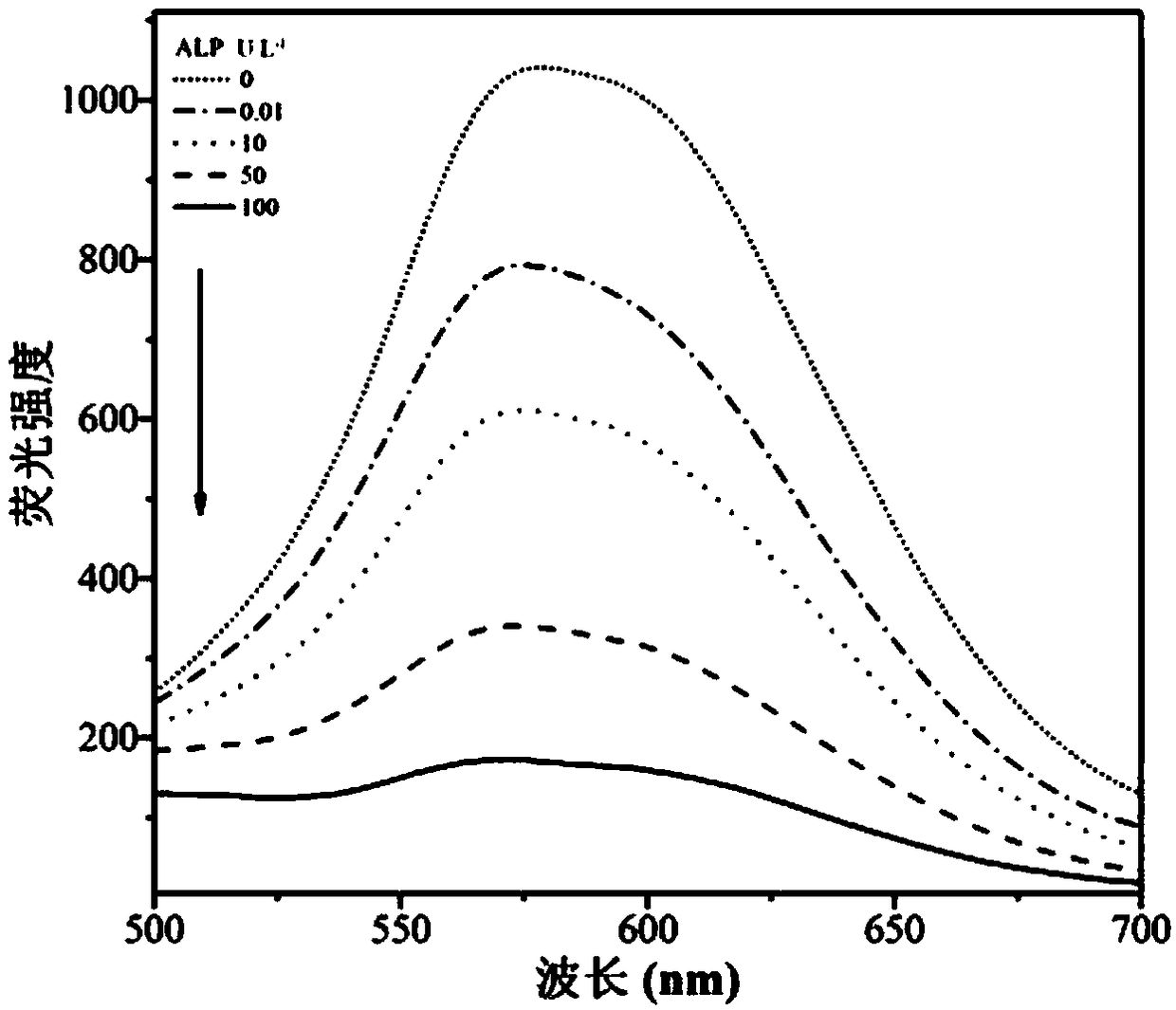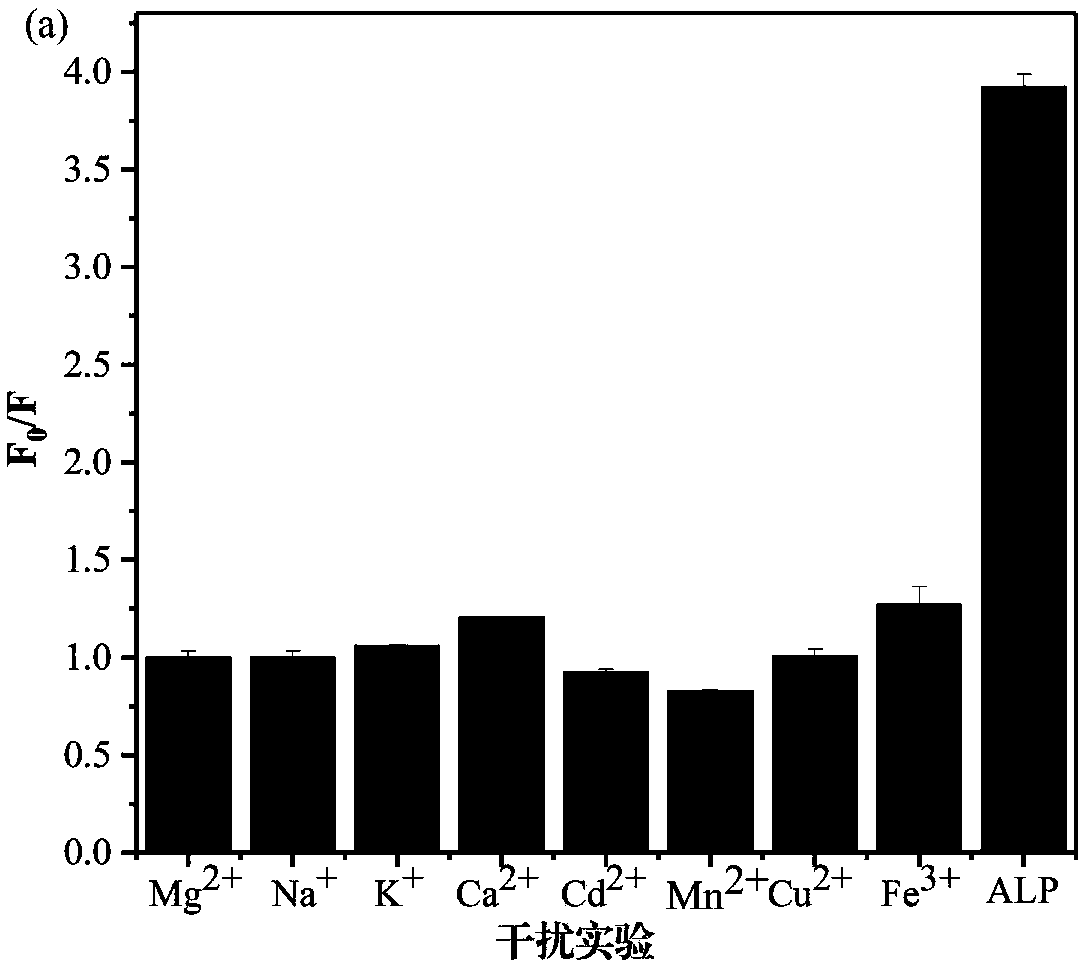CuInS/ZnS quantum dot and method for detecting alkaline phosphatase
A technology of quantum dots and phosphatase, which is applied in the fields of biochemical detection, semiconductor quantum dot synthesis, and analytical chemistry, can solve problems such as insufficient anti-interference ability, large sample demand, and unknown lower limit of detection, so as to reduce physical and mental burden, sample The effect of low requirements and ensuring accuracy
- Summary
- Abstract
- Description
- Claims
- Application Information
AI Technical Summary
Problems solved by technology
Method used
Image
Examples
preparation example Construction
[0030] The present invention provides a kind of preparation method of CuInS / ZnS quantum dot, comprises the following steps:
[0031] (1) Mixing the copper source compound, the indium source compound and the mercapto fatty acid with water, adjusting the pH value to 8-10 to obtain a mixed solution;
[0032] Among them, Cu 2+ 、In 3+ The molar ratio is 0.015~0.045:0.015~0.120; Cu 2+ 、In 3+ The molar ratio of the sum of moles of mercapto fatty acid to mercapto fatty acid is 0.03-0.06:0.24-0.90;
[0033] (2) Under stirring conditions, mix the mixed solution obtained in step (1) with the sulfur source compound, microwave-assisted heating to raise the temperature of the solution to 90-100°C within 4 minutes after mixing, and maintain the temperature for 1-10 minutes to obtain CuInS core-containing the reaction liquid;
[0034] (3) After the reaction solution obtained in step (2) is cooled to below 50°C, zinc source solution and sulfur source solution are added to the reaction sol...
Embodiment 1
[0054] Synthesis of CuInS / ZnS Quantum Dots by Microwave Assisted Heating
[0055] 0.025mmol InCl at room temperature 3 Dissolve 0.2mmol mercaptopropionic acid (MPA) in 20mL double-distilled water, adjust the pH value to 8 with 1mol / L NaOH solution; then add 0.5mL 0.015mmol CuCl 2 Ammonia solution and 0.3mmol MPA; then add 0.04mmol Na under vigorous stirring 2 S solution, using microwave-assisted heating, the temperature of the solution was raised to 100 ° C within 1 min under 800 W power, and kept for 5 min to obtain CuInS cores. Stop heating and wait until it cools below 50°C, then slowly add 1mL 0.02M Zn(Ac) to the solution 2 solution and 1 mL of 0.02M Na 2 The S solution was heated under 800W microwave again, and the temperature was raised to 100° C. within 1 min, and kept for 5 min. After the reaction was completed, the final product CuInS / ZnS quantum dots were obtained.
Embodiment 2
[0057] Synthesis of CuInS / ZnS Quantum Dots by Microwave Assisted Heating
[0058] 0.06mmol InCl at room temperature 3 Dissolve 0.5mmol mercaptopropionic acid (MPA) in 20mL double-distilled water, adjust the pH value to 10 with 1M NaOH solution; add 0.5mL 0.025mmol CuCl 2 Ammonia solution and 0.4mmol MPA; then add 0.02mmolNa under vigorous stirring 2 S solution, using microwave-assisted heating, the temperature of the solution was raised to 95° C. within 3 minutes under the power of 700 W, and kept for 8 minutes to obtain CuInS nuclei. Stop heating and wait until it cools below 50°C, then slowly add 1mL 0.01M Zn(Ac) to the solution 2 solution and 1 mL of 0.01M Na 2The S solution was heated by microwave at 700W again, and the temperature was raised to 95° C. within 3 minutes, and kept for 8 minutes. After the reaction was completed, the final product CuInS / ZnS quantum dots were obtained.
PUM
| Property | Measurement | Unit |
|---|---|---|
| correlation coefficient | aaaaa | aaaaa |
Abstract
Description
Claims
Application Information
 Login to View More
Login to View More - R&D
- Intellectual Property
- Life Sciences
- Materials
- Tech Scout
- Unparalleled Data Quality
- Higher Quality Content
- 60% Fewer Hallucinations
Browse by: Latest US Patents, China's latest patents, Technical Efficacy Thesaurus, Application Domain, Technology Topic, Popular Technical Reports.
© 2025 PatSnap. All rights reserved.Legal|Privacy policy|Modern Slavery Act Transparency Statement|Sitemap|About US| Contact US: help@patsnap.com



